You will find answers to these and many other questions in our new research article below.
Owing to another tip given in a commentary to one of the previous articles we have found an indication that in old times our semi-literate (as we erroneously imagine) ancestors possessed serious knowledge on construction of both sacred buildings and city fortresses, in particular on application of sacred geometry in construction of building foundations and even whole architectural complexes for the purpose of activating positive features and blocking negative features in local population. In this article we shall talk about quadratic structures that are indicative of the common ancient symbolism of spiritual knowledge as reflected in architectural layouts of temples and churches of various religions, and most amazingly in location of gates to ancient cities and fortresses on different continents of the planet. The outcome of our earlier work on proving the existence of the four human Aspects may be directly linked with a strange pattern in references to the number of main gates in ancient cities and the gates orientation at the four cardinal directions: south, west, north, and east. However, let’s first dwell at length on the architecture stories of two places – Ancient Egypt of the times of Hermes Trismegistus and Kievan Rus of the times of Agapit of Pechersk (times of the reign of Yaroslav the Wise). We shall postpone to later publications a bold assumption that these two highly spiritual Personalities – the ancient Egyptian deity and the revered Orthodox Saint whose relics are kept in Kiev Pechersk Lavra caves – were incarnations of one and the same Spiritual Being who visits the earthly world from time to time, and let’s refer to the sources.
Source number one: Picatrix(Ghāyat al-Ḥakīm), an extensive treatise on sympathetic and astral magic, where special emphasis is made on talismans. At that, we are not interested in magic – only the following lines in this book deserve attention in our opinion:
The Chaldeans, indeed, were those magi who made themselves preeminent in this science and these workings; and they are held to have been entirely perfect in this science. They themselves assert that Hermes (Trismegistus) first constructed a certain house of images, from which he used to measure of the flow of the Nile at the Mountains of the Moon; but this house was made of the Sun. He used to hide himself there from men in such a way that no one who was with him was able to see him.
He also it was who built, in the east of Egypt, a city twelve miles in length, in which he build a certain citadel that had four gates in its four quarters. At the eastern gate he put the image of an eagle, at the western gate the image of a bull, at the southern gate the image of a lion, and at the northern gate the image of a dog. He made certain spiritual essences enter into these, which used to speak in voices that issued from the images; nor could anyone pass through the portals without their permission. In that city he planted certain trees, in the midst of which he set up an arbour that bore the fruits of all generation.
At the summit of the citadel he caused to be built a certain tower, which attained a height of thirty cubits, and on the summit of it he commanded to be put a sphere, the colour of which changed in every one of the seven days. At the end of the seven days it received the colour it had at first. Every day, that city was filled with the colour of that sphere, and thus the aforesaid city used to shine every day with colour.
Around that tower, in a circle, water abounded, in which many kinds of fish used to live. Around the city he placed diverse changing images, by means of which the inhabitants of the city were made virtuous and freed from sin, wickedness and sloth. The name of this city was Adocentyn… (In the original Arabic text the city is called Al Ashmunain.)

Hermes Trismegistus, D. Stolcius von Stolcenbeerg: Viridarium chymicum, 1624
In the book Giordano Bruno and the Hermetiс Tradition by Frances A. Yates we find an analogy very similar to that in Picatrix:
In his most famous work, the Città del Sole, or the City of the Sun, Tommaso Campanella outlined his Utopia, his idea of the ideal state… The Città del Sole was probably written about 1602, that is in the very early years in prison (he was imprisoned for 27 years!)...
The City of the Sun was on a hill in the midst of a vast plain, and was divided into seven circular divisions (giri) called after the seven planets. The houses, palaces, cloisters of the City were built along these giri, which were separated from one another by walls. Four roads traversed the City, starting from four outer gates, the points of the compass, and running towards the centre.
In the centre, and on the summit of the hill, there was a vast temple, of marvellous construction. It was perfectly round, and its great dome was supported on huge columns. On the altar, the only objects were a great “mappamondo” (celestial globe) on which all the heaven was depicted and another showing all the earth. On the ceiling of the dome were depicted all the greatest stars in heaven, with their names and the powers which they have over things below, with three verses for each; the representations on the dome were in correspondence with the globes on the altar. In the temple hung seven lamps, which were always lighted, called after the seven planets. On the outer walls of the temple, and on its curtains, every star in its order was also represented with three verses for each. (Città del Sole, ed. cit., pp. 3-5.)
It is clear that the temple was a detailed model of the world, and that the cult celebrated in it must have been a cult of the world.
The walls of the giri also had representations on them, on both their inner and their outer sides. On the inner side of the first giro (the one nearest to the temple) were shown all mathematical figures, more than those described by Euclid and Archimedes; on its outer side, the map of all the earth with all its provinces, with descriptions of the rites, customs, and laws of each, and the alphabets of their languages, co-ordinated with the alphabet of the Solarians… (omitted by the article author) ...There were Moses, Osiris, Jupiter, Mercury, Mahomet, and many others. In a higher and more honourable place on this wall were placed images of Christ and the twelve apostles, whom the Solarians greatly venerated.
The City was thus a complete reflection of the world as governed by the laws of natural magic in dependence on the stars. The great men were those who had best understood and used those laws, inventors, moral teachers, miracle workers, religious leaders, in short, Magi, of whom the chief was Christ with His apostles.
The ruler of this City was the chief priest whose name meant the Sun (in the manuscripts, the name is represented by the symbol of the sun, a circle with a dot in the centre), and; in our language, Metaphysics. The Sun Priest was the head in all things, both spiritual and temporal. He was assisted by three collaborators, Power, Wisdom, and Love. Power had charge of all military matters; Wisdom of all the sciences; and Love directed the processes of generation, of uniting masculine and feminine, in such a way as to secure a good race; education and medicine were also under his care.
Under this rule, the people of the City lived in brotherly love, having all things in common; they were intelligent and well-educated, the children beginning at an early age to learn all about the world and all arts and sciences from the pictures on the walls. They encouraged scientific invention, all inventions being used in the service of the community to improve the general well-being. They were healthy and well skilled in medicine. And they were virtuous. In this City, the virtues had conquered the vices, for the names of its magistrates were Liberality, Magnanimity, Chastity, Fortitude, Justice, Ingenuity (Solertia), Truth, Beneficence, Gratitude, Pity, and so on. Hence, among the Solarians, there was no robbery, murder, incest, adultery, no malignity or malevolence of any kind.
It is surely clear that the head priest, and his assistants, who governed the City of the Sun were Magi, who understood the world, knew how to “draw down the life of heaven”, to use Ficino’s phrase, for the benefit of mankind. Campanella does not describe how the stars were represented in the temple. The star images on the dome, which were in correspondence with the globes on the altar, with its seven planetary lamps – may not these have included magic images of the thirty-six decans of the zodiac? Was it not by a good magic that the City was ruled, so that the good influences of the heaven predominated over the bad? Various sources have been suggested for Campanella’s Città del Sole, such as an influence of Thomas More’s Utopia, particularly in the fiction that the City has been discovered in the New World by a traveller; or an influence of other Renaissance city plans. But such influences are, I believe, secondary. To find the ultimate source one must dig deeper down and uncover those hidden magical springs from which the Renaissance was fed. For, in my mind, the closest parallel to Campanella’s City is none other than the City of Adocentyn in Picatrix. (F.A. Yates. Giordano Bruno and the Hermetiс Tradition)
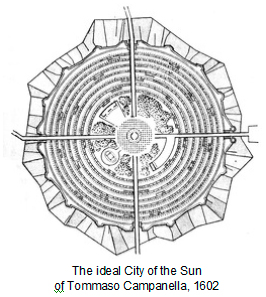
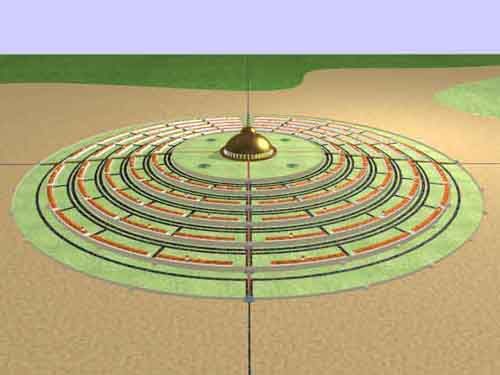
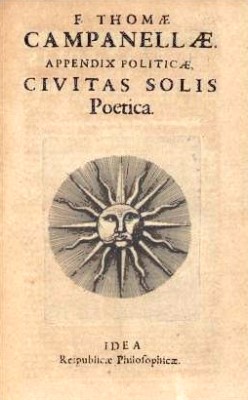
There is an interesting article (with relevant drawings) dedicated to ideas of progressive-minded representatives of the human society who believed that regular geometric shapes in urban development might have a special influence on the further destiny of city dwellers (link: Ideal Cities).
We further proceeded with ordinary online search and unexpectedly discovered a marvellous identity: it turns out that most ancient cities located in different parts of the world, representing impregnable fortresses intended to protect their population from hostile invasions, were constructed by exactly the same principle. In particular, they had four main gates often oriented at cardinal directions. Foreknowing readers will be intrigued I will try to enhance the impression by listing examples of a vast geography of such special city planning principle that has a purely sacred meaning I should say in advance. Please, be patient: by the end of this article I’ll do my best to reveal the entire essence.
The following remark is taken from the Selected Works on Semiotics and the History of Culture. Volume 4: Sign Systems:
The idea of a city as of a sacred image of the Universe is still observed in such cradles of Buddhist culture as Nepal. Each of the large Nepalese cities is regarded as a geometric symbol of the world, similar to a mandala. The city is surrounded by eight temples dedicated to goddesses (“the Eight Mothers”) and oriented at cardinal directions (just like corresponding eight symbols on mandalas). Such circle, which is symbolically understood as the border of the world, protects the city from diseases. The same city structure associated with protection against demons that enter the city is represented in South Asian Buddhist traditions, in particular in Ceylon. Orientation by cardinal directions is reflected in a concentric circle with four stupas located on it, each representing one of Buddhas, and four gates built in fortified walls that surround Nepalese cities.


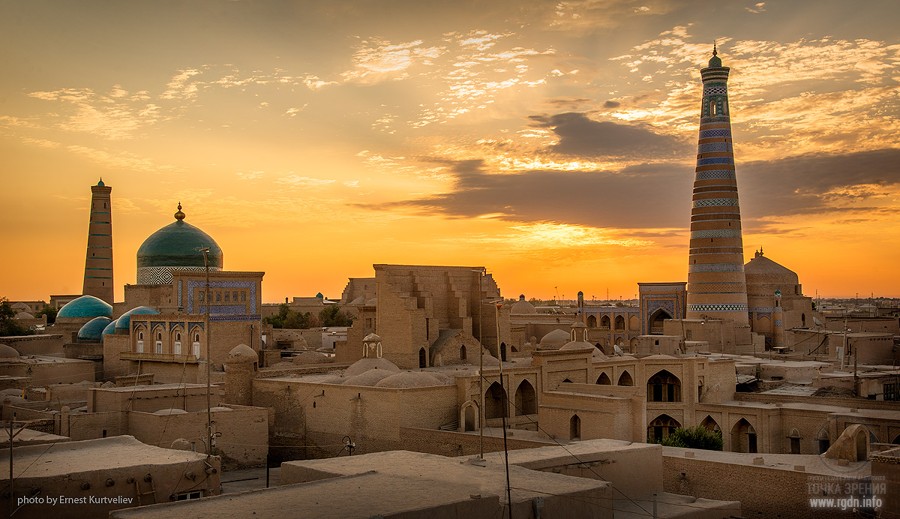

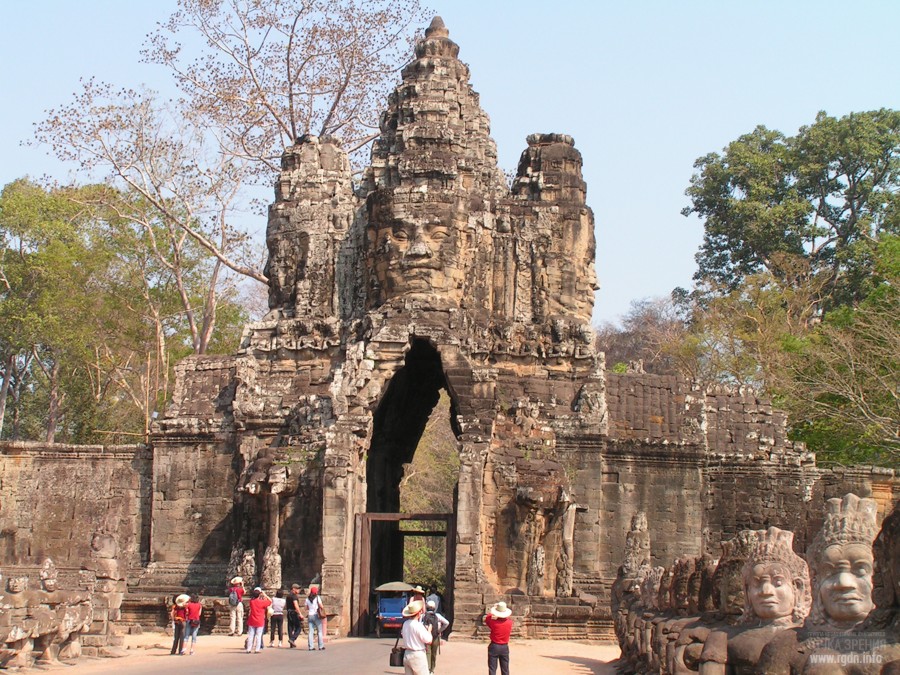
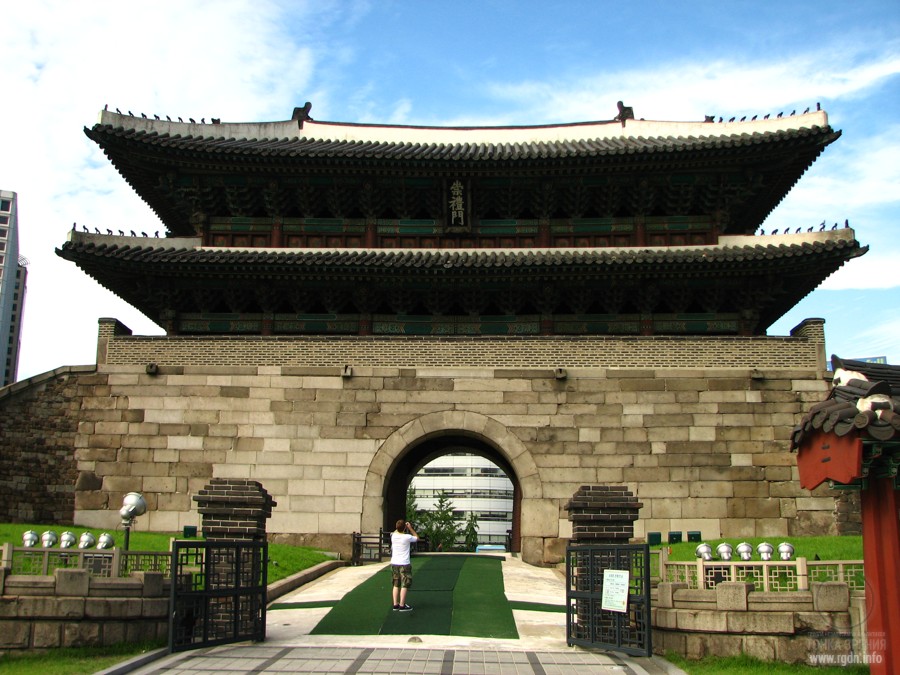
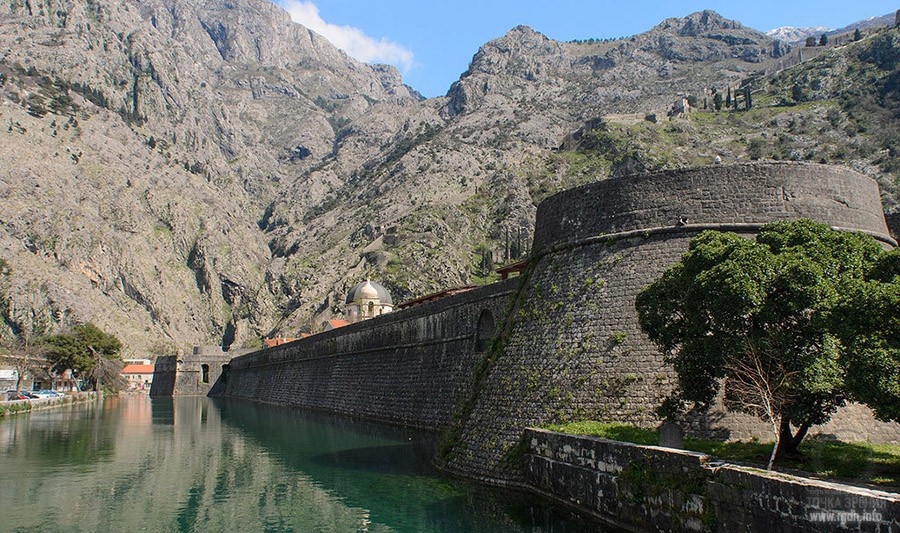
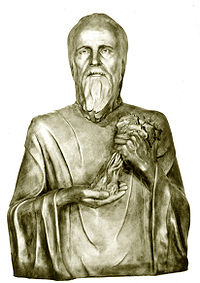 We could continue with the information further, since there are plenty of such historical findings. As we see from the above records, for some reason most ancient cities on different continents were constructed by one and the same principle, a characteristic feature of which was four gates oriented mostly at the cardinal directions. Thus, a logical question arises: why? What compelled our ancestors to apply the same urban development principle: convenience or defensive strategy only? In such case, why did they orient cities by the cardinal directions? Let’s stop making guesses and refer to our major encyclopaedic source of the Primordial Knowledge – the AllatRa book. Among other things it contains the story of unique developments in the central part of ancient Kiev during the times of Kievan prince Yaroslav the Wise. The extracts cited below partially (surely not completely) unravel the mystery of the aforesaid architecture principle which was based on the pure spiritual knowledge and to all appearances was very efficient as to activation of positive personal features and manifestation of the best spiritual qualities in people.
We could continue with the information further, since there are plenty of such historical findings. As we see from the above records, for some reason most ancient cities on different continents were constructed by one and the same principle, a characteristic feature of which was four gates oriented mostly at the cardinal directions. Thus, a logical question arises: why? What compelled our ancestors to apply the same urban development principle: convenience or defensive strategy only? In such case, why did they orient cities by the cardinal directions? Let’s stop making guesses and refer to our major encyclopaedic source of the Primordial Knowledge – the AllatRa book. Among other things it contains the story of unique developments in the central part of ancient Kiev during the times of Kievan prince Yaroslav the Wise. The extracts cited below partially (surely not completely) unravel the mystery of the aforesaid architecture principle which was based on the pure spiritual knowledge and to all appearances was very efficient as to activation of positive personal features and manifestation of the best spiritual qualities in people.

Rigden: Generally speaking, it should be noted that the quadratic structure, which points at the common ancient
symbolism of spiritual knowledge, is reflected also in the architectural layouts of temples belonging to other religions. For instance, temple and monastery complexes of Ancient China had a square and a circle in their base. The largest and famous Temple of Heaven, for example, is divided into two parts in its layout: one is shaped as a square (a symbol of the Earth, earthly powers) and the other one is rounded (the circle is a symbol of Heaven, heavenly forces). In China, joint depiction of a square and a circle (Earth and Heaven) still symbolises an ideally balanced person (in spiritual aspect). Another example: the shape of Muslim mosques that are oriented towards the Kaaba in Mecca is also square or rectangular…
Anastasia: Yes, you once told us about this and about Christian temples, too. A Christian quadrifolium (“four-leaved clover”, from the Latin word quadri meaning “four times” and folium – “leaf”) is a cross-in-square temple, the four branches (bays) of which are crowned with dome-shaped curves denoting the “firmament.” You mentioned that the Greek name of such temples was tetraconch (“four shells”; from the Greek word tetras meaning “four” and konche – a “shell”, a “whirlwind”, “what is spirally twisted”). I got interested in it and discovered many interesting facts. Such structures were popular not only in ancient Rus, but also in the Byzantine Empire, Transcaucasia countries (Armenia and Georgia), Persia (Iran), India, and other ancient lands. They came to the West through the Hellenistic culture, which had borrowed many things from the cultures of the ancient East. But what’s remarkable is that in early Christian temples of the Middle East and Europe (and later in Christian temples of ancient Rus as well) the altar at first was installed exactly at the templeCrossing as a throne of the “invisible God”! That is, under the central big dome in the middle of the church. And only much later was the altar moved to the protruding eastern part of the building.

Scheme of the cross-in-square temple (quadrifolium) – image taken from the AllatRa book


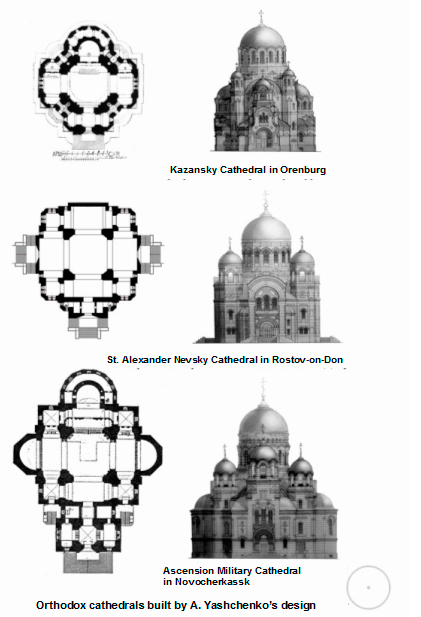
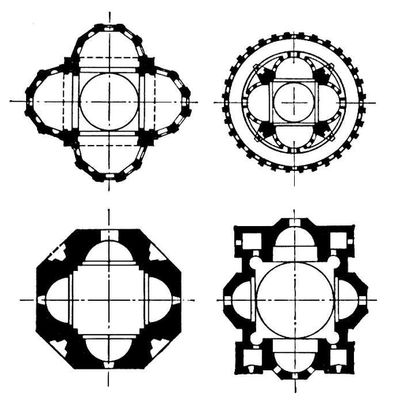
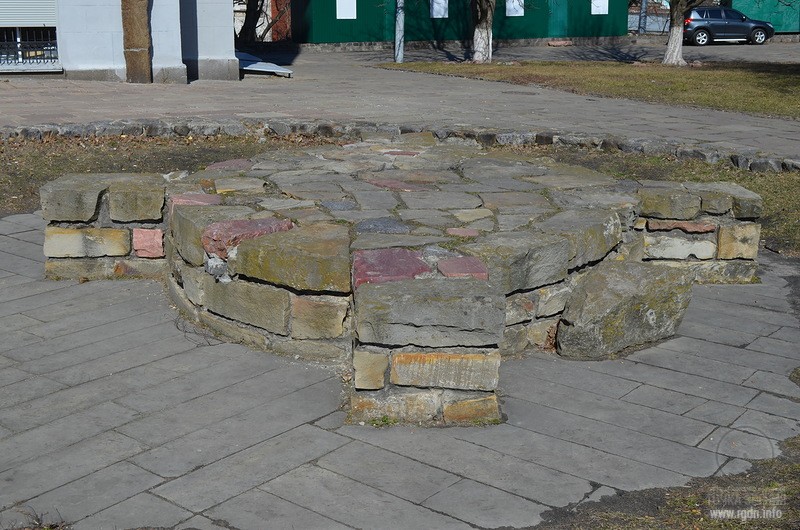
Tetraconchs in layouts of churches and ancient heathen temples (supplementary images collected by the article author)
Rigden: The crossing, or the central inner part of the church, exactly symbolised that “precious pearl in the shell”, which was known to the entire ancient East as a symbol of the Soul… By the way, in the ancient times in Kievan Rus the first version of Saint Sophia’s Cathedral (the “Divine Wisdom”) in Kiev was nothing other than a five-nave cross-domed temple with 13 cupolas, which had a pyramidal composition. At that, the Cathedral domes had crosses at the base of which there were horizontal crescents with horns pointing upwards. Moreover, the centre (shaped as a circle) of each cross was crossed with a diagonal cross, and the overall composition represented an equilateral cross. There was the entire spiritual symbolism there: a circle, a rhombus, indication of 3, 4, 6, 7, 8, 9, 12 and 13, and also the AllatRa sign. The Cathedral was dedicated to the Annunciation, in other words to the Mother of God and Archangel Gabriel.
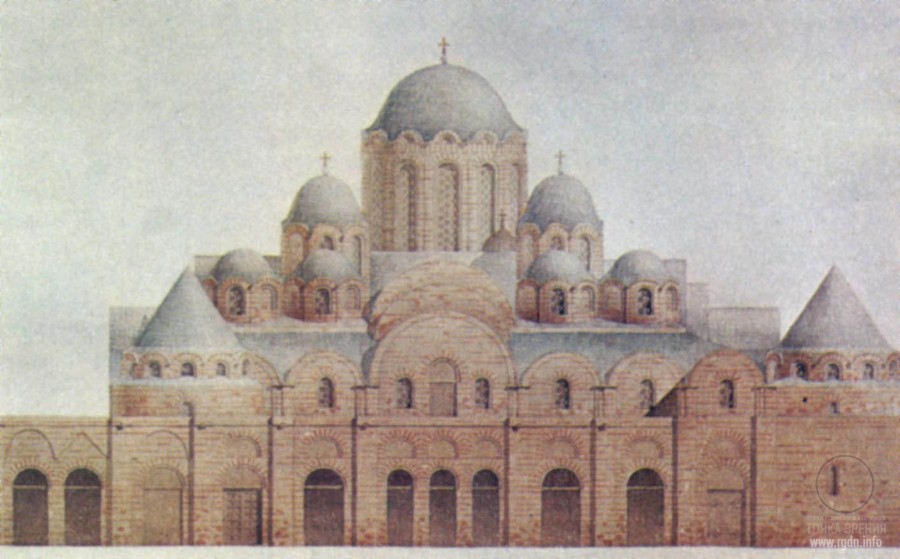
Ancient Saint Sophia’s Cathedral in Kiev (image found by the article author)


Symbols of Archangel Gabriel and Virgin Mary:
1) cross – the symbol of Virgin Mary;
2) central cross – the symbol of the Mother of God (Virgin Mary) with the top symbolising the Teaching brought from the Spiritual World – the AllatRa sign (it symbolised both the true spiritual Teaching introduced by Jesus Christ and transfer of the spiritual Knowledge, “revelation of the Spiritual World Will” in the meaning of the “news” brought by Archangel Gabriel as the Spiritual World messenger).

Simplified scheme of the symbol which was later used by people after recurrent reconstruction of cathedrals and churches
Rigden: Quite true. It’s worth mentioning that it is exactly Saint Sophia’s Cathedral in Kiev that served as an example of construction of such temples with such symbols in Kievan Rus. It was built in the 11th century in the centre of Kiev by the design which Agapit of Pechersk advised to the prince Yaroslav the Wise. The temple was unique even for the Byzantine architecture of that time. Yaroslav the Wise (the Grand Prince of Kiev, the former prince of Rostov and prince of Novgorod) met Agapit of Pechersk, the Unmercenary Physician due to his illness. At that time, the fame about Agapit’s medical skills extended far beyond Kievan Rus. Yaroslav had problems with his spine due to the damage to his hip and knee joints. Thus, speaking in the modern language, he became Agapit’s regular patient. Owing to such communication, which was necessary and quite advantageous for Yaroslav, as well as to the education he gained from Agapit on many important subjects relating to the Knowledge about both the human being and society as a whole, prince Yaroslav, one could say, actually became the “Wise”.
As a result of such communication, first independent Russian monasteries appeared, moreover, in honour of the Most Holy Mother of God. Active translation of foreign books (especially from Mount Athos) began as well as diligent rewriting of Old Slavonic folios (even of Old Russian “pagan” manuscripts written on birch bark). Books became the basis of public education. Agapit’s erudition and advice to Yaroslav led to the fact that prince himself got interested in reading books, making education fashionable among both his entourage and ordinary people. Following Agapit’s advice, the prince organised first public schools for children; a large national-level library was founded in the capital city near Saint Sophia’s Cathedral, major signs and symbols were recorded for society, and diplomacy at the international level was maintained. So, it is no wonder that Kievan Rus reached the height of its development during the reign of Yaroslav the Wise.
Anastasia: These facts are indeed interesting and explain much about such an extreme change of Yaroslav’s behaviour: from the cruel ruler who wouldn’t hesitate to use any means to seize power in Kiev to a leader who became “wise” during his reign in Kievan Rus after meeting Agapit of Pechersk… Besides, the symbols and the unusual architecture of the five-naval cross-domed building of Saint Sophia’s Cathedral is far from accidental, taking into account its 13 cupolas and pyramidal composition…
Anastasia: ... It should be mentioned that the building of Saint Sophia’s Cathedral in Kiev experienced numerous partial destructions by time and people. Furthermore, in the 17-18th centuries, as a result of the Cathedral reconstruction, its external appearance was significantly changed… (read more on allatra.us)
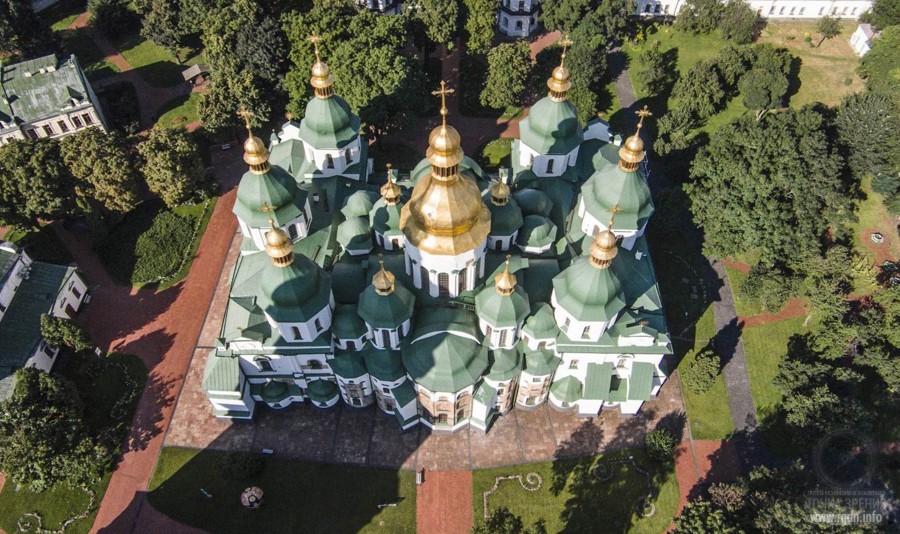
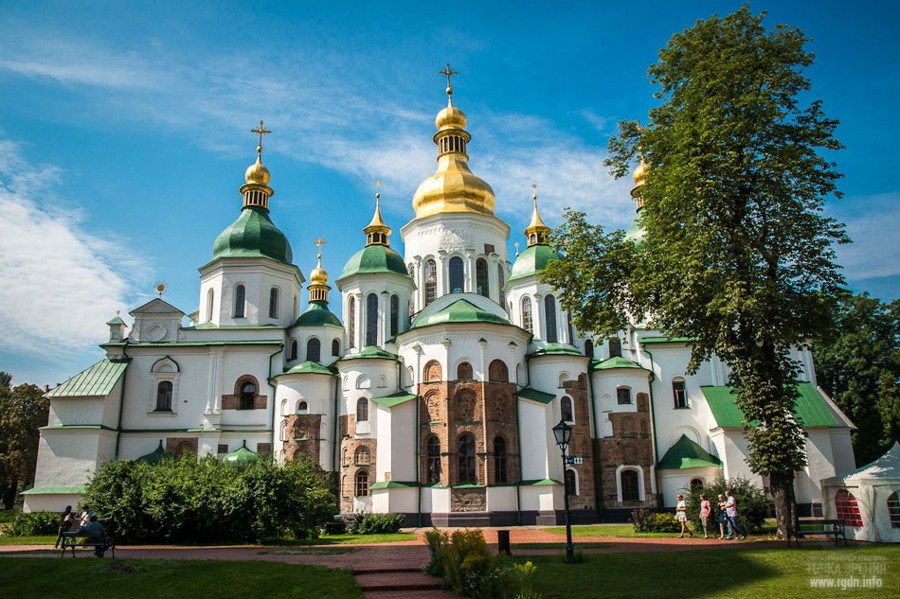
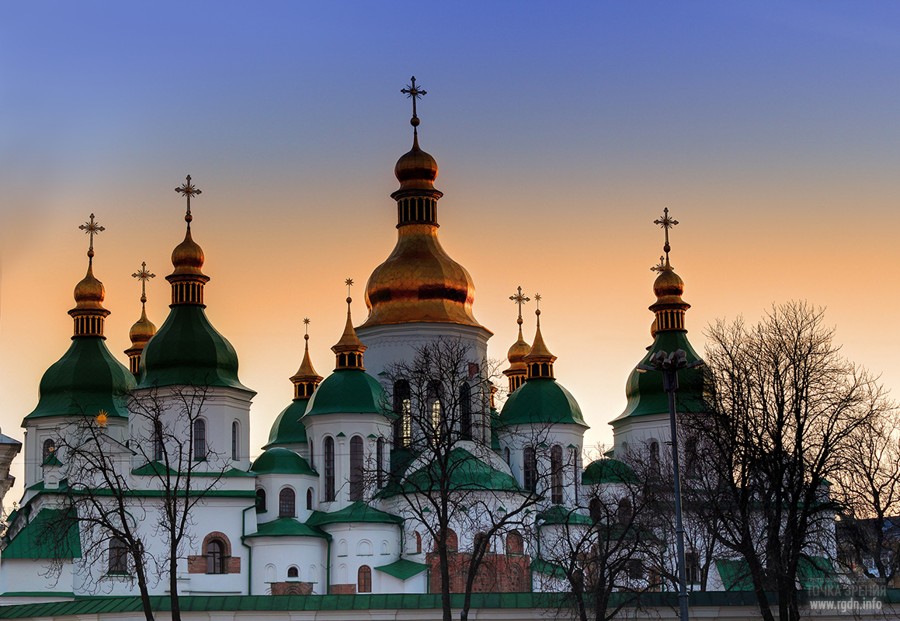
Rigden: ... Agapit of Pechersk partially let Yaroslav the Wise into the secret of active signs; he told him in detail which particular principal objects of worship should be built in the capital and in the country, and in which way, and most importantly, what signs should be placed on them and how. And also what had to be done to activate those signs in order to generate a spiritual surge in people and protect them from the influence of negative forces of the invisible world. Agapit certainly pursued his own goals, laying the foundation of spiritual signs for future generations, as opposed to Yaroslav’s fleeting human goals. After all, humans are humans: even if you warn them ten times of the consequences, they still try to make adjustments from the mind to the Knowledge given to them. Unfortunately, Yaroslav was no exception to the human race, in this respect at least. Knowing what effect the reverse swastika exerts on the masses, Yaroslav still gave an order to include this sign in the Cathedral decoration to strengthen his earthly power. Yet, what was the point? What did he achieve? His life flew by like an arrow through the material world illusion, while his human weakness – the thirst for gaining earthly power – after the death of his physical body only burdened him more and prolonged the agony of his torment as a subpersonality. The Animal Mind, however, is still enjoying the human mistake of his by activating generations of priests for its benefit and creating surges of negative energy in the masses of living people.
It must be said through, other than that Yaroslav truly showed Wisdom. Together with a team of like-minded people he successfully finished the project, thanks to which within a short period of time Kievan Rus not only turned into a prosperous state, but also became the “Home of the Most Holy Mother of God.” At that time, mostly due to the proper placement of positive signs and popularisation of the universal cultural and moral values, the best spiritual qualities started to manifest themselves in people further more often. In the worldview of the Slavic people of that time the service to the “God’s Truth” became synonymous to the service to Good, the supreme spiritual Blessing, the victory of God’s Grace. As a matter of fact, people found a common peaceful ground between their old beliefs and the new ones introduced by the previous politicians and priests. That is why after the strife on religious grounds in that period, a positive surge and such a spiritual unity of the people occurred on the territory of the Old Russian state which previously had not differed from other countries drowning in civil strife… (read more on allatra.us)
... Saint Sophia’s Cathedral in Kiev was built not on its own, but as a part of a complex. The four “City Gates” were built at the Cathedral corners at the same distance from it, and they were also marked with signs. Although it would be more correct to say those were the gates to the so-called UpperCity located on OldKievMountain, which is now the central part of Kiev.
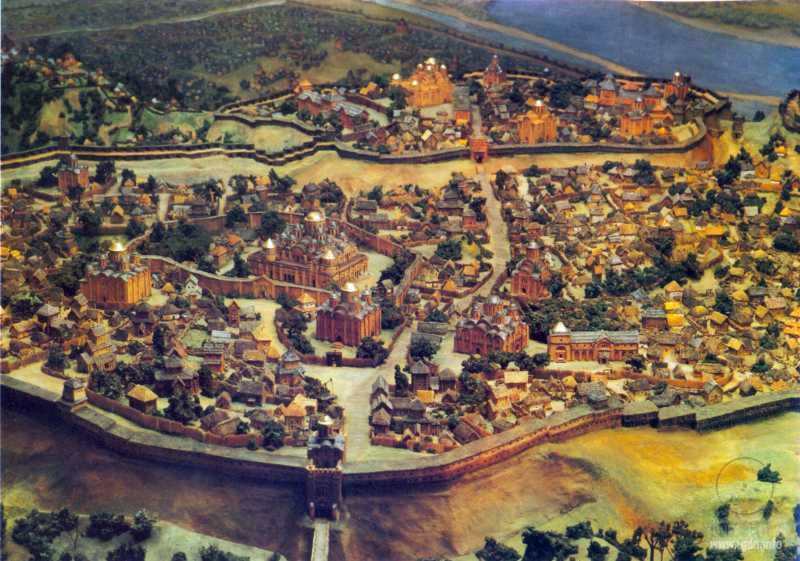
Ancient Kiev layout (provided by the article author)
Anastasia: So, the four gates around Saint Sophia’s Cathedral in Kiev make a diagonal cross similarly to the four Aspects, where the Cathedral itself is the centre as a symbol of the Soul.
Rigden: Precisely. In religious symbolism of Christianity gates represent entrances leading from the narthex into the church and from the church to the altar. The main gate of an Old Russian iconostasis in an Orthodox church was located opposite the throne (in the altar) and was called the “Holy Gate” in the meaning of spiritual and not political supremacy. Usually, in its upper part the Annunciation scene with Archangel Gabriel and Virgin Mary was depicted, and the bottom part had four Evangelists in pairs on the wings of the doors. Thus, the opening of the Holy Gate at certain moments of the service symbolises the “opening of the Kingdom of Heaven”, that is an entrance, a pass to another, spiritual world. And this symbol did not appear without a reason. The energy process of “opening” of a passage into another world really takes place during the spiritual work (both individual and collective) of strong spiritual individuals, regardless of what religion they belong to and in which country they live. By the way, in ancient times among the peoples of, for example, Kievan Rus, the “opening of the gate” to a city meant letting someone into the city; in case of enemies it meant a city occupation or the city dwellers’ willingness to lay down their weapons. If a chronicle mentioned the main gate closing before the enemy, that meant the decision of city residents to offer resistance.
The main Golden Gate of ancient Kiev became the southern gate facing Mount Athos, which is considered to be the “Abode of the Mother of God.” To be more precise, geographically it was located in the south-western part of the city. On this main Golden Gate of the city a church was built in the honour of Archangel Gabriel and the Mother of God – the church of the Annunciation, in order to “always give joy to that city with the holy Annunciation and a prayer of the Holy Mother of God and Archangel Gabriel…”
Anastasia: ... Hence, the Golden Gate in Kiev was a symbol of the city, which was equal to the Front Aspect in the spiritual interpretation of the Knowledge about man. Therefore, the symbol of the city’s Past, i.e. the Rear Aspect…
Rigden: The first stone church of Kievan Rus, which was dedicated to the Blessed Virgin Mary and which today is known in history as the Church of the Tithes, became the Northern conventional “gate.” It was built by prince Vladimir, Yaroslav’s father. The entire Vladimir’s old grand-ducal court was located beside it. Generally speaking, it should be mentioned this place has a more ancient history associated with pre-Christian places of worship.
Anastasia: Yes, judging by archaeological excavations, foundations of palaces and much older buildings were found there, which belong to the “pagan” times of the Slavs, and also the remains of an even more ancient place of worship (a heathen temple) in the form of a stone platform with four protrusions at its corners. In other words, even in more ancient times the OldKievMountain was already an important religious centre of the Slavic peoples who lived in this area.
Rigden: Absolutely. So, Yaroslav the Wise not only restored this church, but also consecrated it once again on Agapit’s advice, this time in the right way. The first church in Kievan Rus which was dedicated to the Mother of God symbolised the past that opened a way for the future. It also played an important role in arrangement of signs in Kiev.

Figure 77. A modern map of the historical centre of Kiev with marks of the previous locations of the four gates and the present Saint Sophia’s Cathedral:
1) Saint Sophia’s Cathedral;
2) location of the foundation of the Church of the Tithes (the first stone church in Kievan Rus dedicated to the Most Holy Mother of God);
3) location of the main Golden Gate;
4) location of the Lach (Lyadskie) Gate;
5) location of the Western Gate.
The Western Gate, or as ordinary people called them Zhidovski (Jewish) Gate, became the Right Aspect for the ancient capital. Geographically, they were located in the northwest part of the city. A few centuries later, when LvivCity was founded, the gate was named the Lviv Gate because the road from Kiev to Lviv went through them. Today, there is Lvivska Square in that place. It is interesting that over time, one can say, nothing has changed as to activation points that stimulate the animal nature in people. There was a marketplace here in the old days, and it still remains, though it’s now called the “Trade Centre”. Moreover, the incentive for hoarding and increasing material wealth in this city (just like in other major cities of the world) is still blooming with weeds, instead of really important and necessary incentives for people – creating deeds from the “fruit-bearing, eternal tree” – the Spiritual Nature.
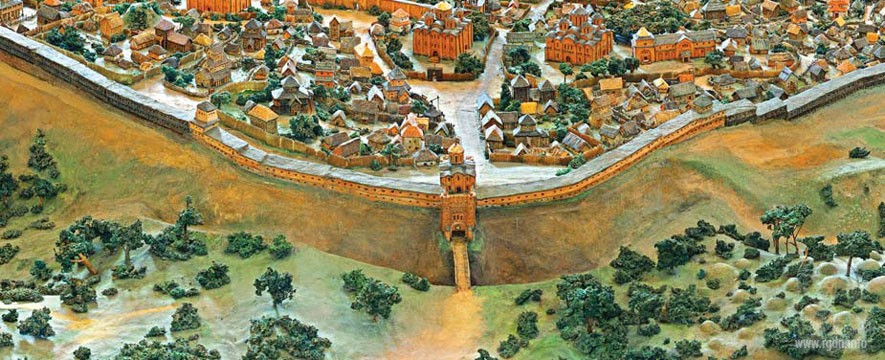
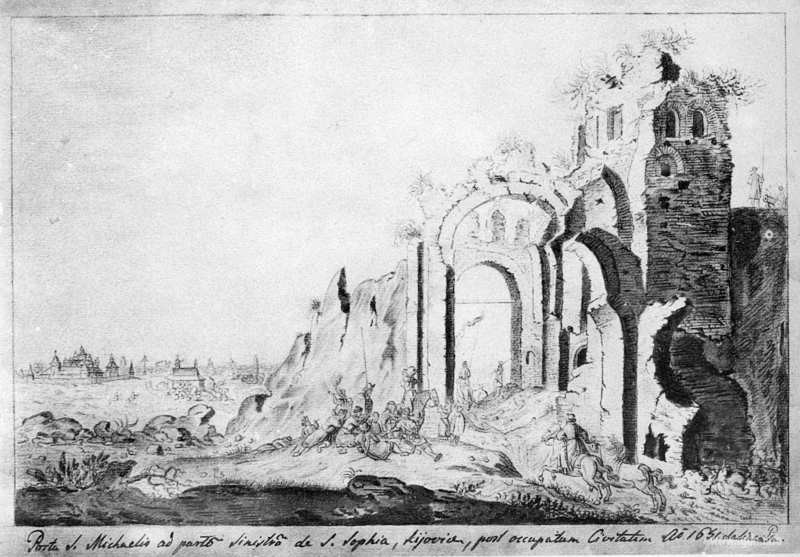
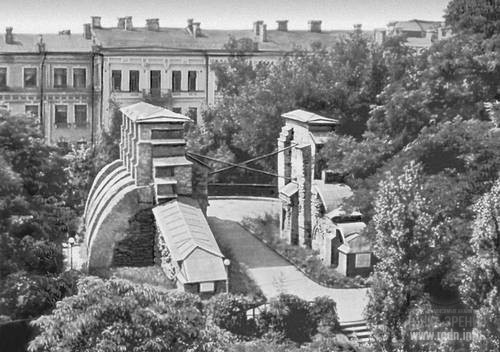
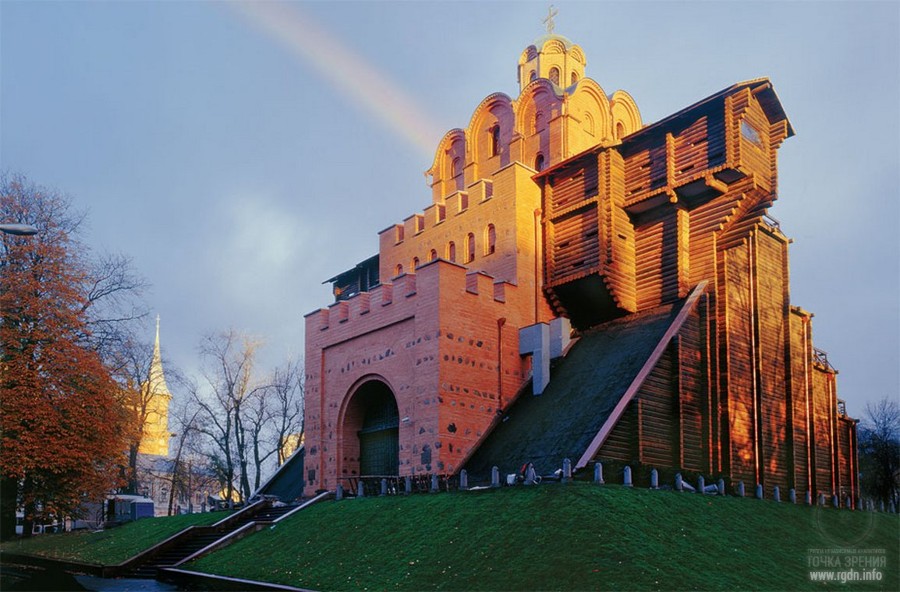
The Front Aspect – the Golden Gate in old times and nowadays, Kiev (note by the article author)
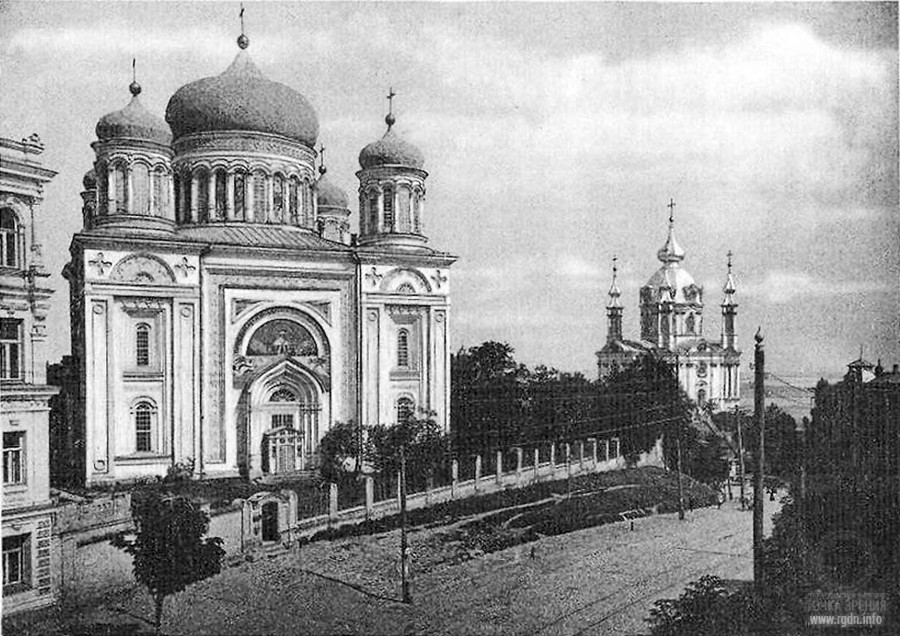
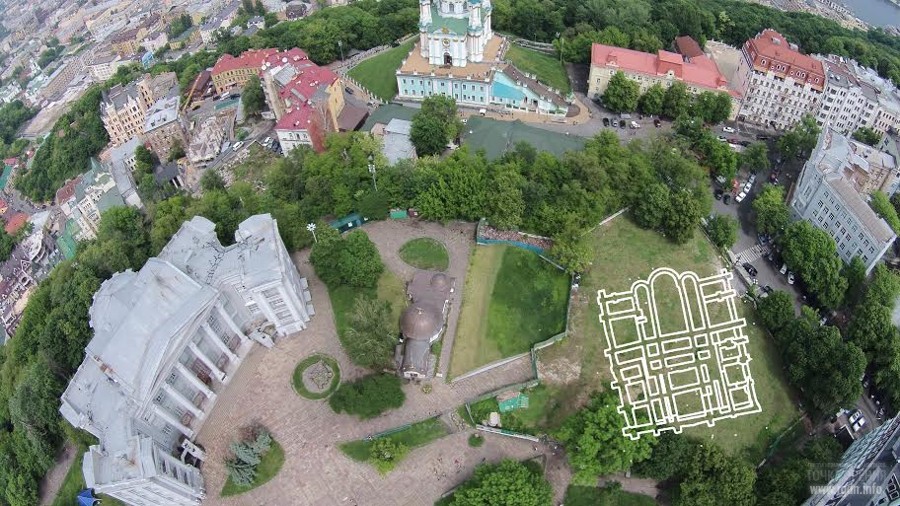
The Rear Aspect – the Church of the Tithes, or the Church of the Dormition of the Most Holy Mother of God, Kiev (note by the article author)

The Right Aspect – the Zhidovski (Jewish) Gate, Lvivska Square, Kiev (note by the article author)
Anastasia: Unfortunately, this is so. If we take a look at modern Kiev, the first thing that catches the eye is a large number of shopping centres, banks and other similar institutions, one richer than another. One gets an impression that everybody is obsessed only with trade, instead of real spiritual and creating deeds that are worthy of a civilized human society.
Rigden: Such large cities of the world are a vivid example of the prevailing human choice. But I repeat, improvement of the situation is in the hands of people themselves. So, even at that time Agapit recommended Yaroslav to “reinforce” the Western Gate with a spiritual and cultural object that would have a sign intended to balance the invisible forces so as to avoid tilting towards the animal nature of people who visited this place. Thus, a church dedicated to the Presentation of the Lord was built here. This was symbolic. Firstly, the old Slavic word сретение meant a “meeting”, and according to old Slavic beliefs it meant a meeting of man with the divine and his glorification. Secondly, the Biblical story of the Presentation was dedicated to the Mother of God (Virgin Mary) who brought Baby Christ to the temple on the fortieth day after His birth. In Orthodoxy, the Presentation was celebrated a week before 25 February, and in the spiritual aspect it was regarded as a renewal, as a meeting of the old and the new. Therefore it’s very symbolic that the Western Gate in ancient Kiev was reinforced exactly with such spiritual and cultural object.
While Saint Sophia’s Cathedral was the centre, the Golden Gate was conventionally the Front Aspect, the Church of the Mother of God (Church of the Tithes) represented the Rear Aspect, and the Western Gate was the Right Aspect, then the Lach Gate was a symbol of the Left Aspect of the ancient capital of Kievan Rus. The gate was located at the place where today the city central square is situated – Maidan Nezalezhnosti (“the Independence Square”), popularly known as Maidan.
Anastasia: You know, when I heard this information from you for the first time I was overwhelmingly surprised, having thought: “That’s interesting, whose idea was it to move the capital’s main square exactly to this place, deliberately emphasising the Left Aspect?” Because this place, as the capital’s square, gathers crowds of people.
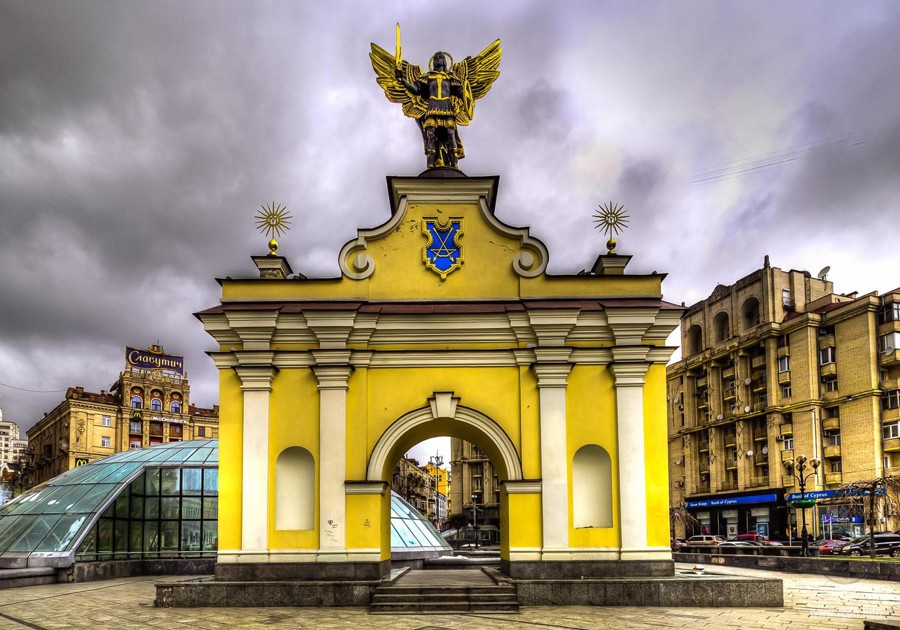
The Left Aspect – the Lach (Lyadskie) Gate, GoatSwamp, now Maidan Nezalezhnosti, Kiev (note by the article author)
Rigden: Perfectly true. It was done not by accident but quite consciously, as they say, from the Mind, the Animal one. Well, first things first. The area in Kiev where today the Independence Square is located was called “Perevesishche” (that which outbalances – translator’s note) in the times of Agapit. There was a marsh there, and people called it the Goat Swamp since olden times. So, approximately there, in the south-eastern part of the city where nowadays Sophievskaya Street begins on Maidan, leading to the Cathedral, Yaroslav the Wise placed the Eastern Gate that opened a way from Kiev to the Pechersk Monastery (currently Kiev Pechersk Lavra) and also to the Pecheneg land. The gate got the name of Lyadskie in history. The word lyad, when translated from the Old Slavonic language, means “unclean”, “unlucky”; and lyada means “wasteland”, “weeds”, “thick bush”, “raw land.” By the way, a few centuries later, after a long siege of the city the army of Batu Khan managed to break into Kiev exactly through the Lyadskie Gate. As for the place itself, it remained a “wasteland” until the 19th century when freemasons, doing their bit to destroy the spiritual heritage of the Slavs, initiated construction of the city council building particularly in this “dirty place”…
What may be said in conclusion? First of all, while reviewing the collected materials one can easily guess that ancient urban development was based on certain strict principles, where the main point was not convenience or defensive strategy, but rather serious and concrete spiritual knowledge according to which space configuration and relevant activation of certain working signs contributed to transformation of the human personality and manifestation of the best moral and ethical qualities in people. You should agree that in contemporary understanding, while four gates in cities may be explained by some traditions, fashion, convenience or safety, why was orientation at the cardinal directions so important? In this respect, Rigden Djappo’s comments and explanations in the AllatRa book sound quite convincingly, though he has only slightly lifted the veil of the mystery for us. Apparently, both Hermes Trismegistus in Ancient Egypt and Agapit of Pechersk in Kievan Rus, as well as Rigden Djappo nowadays who has described construction of a whole architectural complex in Kiev around the centre – Saint Sophia’s Cathedral, have pursued one and the same goal: spiritual transformation of the human society or, in other words, application of sacred architecture technology that helps people become better and kinder. On the other hand, from olden times the opposing party whom we know as Archons have been resisting manifestations of true spirituality in the material world, doing their best to eliminate relevant knowledge and establish a totally controlled global system, which we are actually observing today. It becomes clear why contemporaries who consider themselves clever and reasonable have no idea of the four human Aspects and unable to explain ancient secrets of sacred construction and urban development.
Secondly, the author of this article so far lacks clear answers on how ancient architecture principles worked and which specific signs were applied. At that, having a great desire to sort it all out and summarize the aforesaid in one or another way, he can only dare to assume that ancient sacred architecture was based on application of the so-called “positive working signs” (see details in the AllatRa book) which exerted influence on the human Animal Aspects, so to say restraining them and decreasing their undesirable interference, and protected people from the influence of negative forces of the invisible world. Thus, people became freer from thoughts, negative emotions, fixed ideas and desires, which in turn opened a way for them towards the Front Aspect, spiritual development, liberation, and God. Let’s remind we gave more details about the four human Aspects in our earlier article. At the same time it may be admitted there is a certain impact of fractality as well, for if we look closely and think deeper, the human energy structure or Tchetverik (four-unit structure) was reproduced on the macro scale in a temple or church where the foundation had a shape of a tchetverik (or square) with the four built-in Aspects and activated signs, while on the further larger scale there was a city architectural complex with the same structure and cult buildings playing the role of the four Aspects and activated signs!
The following remark is worth citing:

Rigden: When a person searches, he or she actually finds more than he or she has expected to find. The knowledge about fractals is more ancient than contemporary people imagine. It is just that in the human society the usual process of the knowledge borrowing, concealing and renaming occurs; usual vanity games take place from generation to generation, from century to century.
And furthermore:
Many people who lived in ancient times, even without possessing such detailed information about the material world as modern learned humans have, understood the main point: what this earthly world is and how to control oneself in order to go beyond its boundaries and reach the spiritual world. Mirror reflections and deepening either towards the macrocosm or the microcosm of the material world lead to interpenetration, which begets in a person as an Observer inside the system a sensation of infinite similarity of a part to the whole. Yet, such sensations are illusory, for matter is temporary and limited in its manifestation. The real eternity for a human being is concealed only inside the Soul – in this infinitely small something that has a gateway to infinitely large something, which forms areas of mutual attraction and interpenetration in its intersections. This is exactly the true infinite similarity of a part to the whole.
Let’s briefly summarize all the aforesaid: the great Teacher and Bodhisattva again and again brings to the earthly three-dimensional world the Knowledge that makes it possible to transform the human society for the better and to help everyone who desires abandon this world and enter the Spiritual World, paradise or nirvana (whatever one may call it), save the Soul or achieve enlightenment (whichever concept is more habitual). The least we can do is to express our sincere heartfelt gratitude to Him.
As for the question on what should be done next, there is an elementary answer: study, be interested and restore the lost knowledge! Otherwise this “farm” (civilization) will soon go to the bottom. In one of our next articles we’ll talk about this as well, so follow our publications.
Prepared by Dato Gomarteli (Ukraine-Georgia)
 The ideal cities of Hermes Trismegistus and Agapit of Pechersk. The four gates secret
votes:
209
The ideal cities of Hermes Trismegistus and Agapit of Pechersk. The four gates secret
votes:
209
|

Project Aim










Leave comment